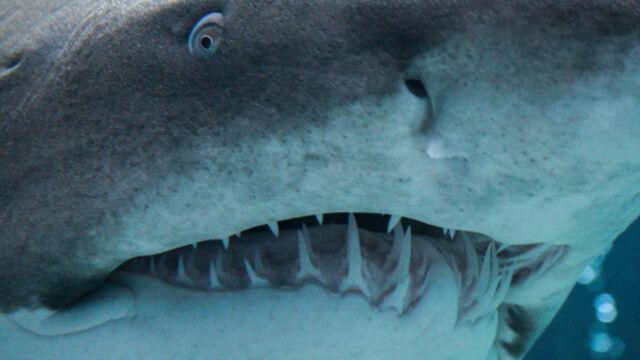Archaeologists in Kentucky Discover the Head of a Monster 330-Million-Year-Old Shark

In a cave in Kentucky, archaeologists have dug up the remains of sharks that are hundreds of millions of years old. During this period, this area was submerged by water.
According to CNN, a team of archaeologists who had dug up the remains of15 to 20 species of fossilised sharksin a cave located in Kentucky. Among these remains, researchers have identified bones from a giant shark's skull which was alive... around 330 million years ago.
Discover our latest podcast
'There were quite a few shark teeth in the photos’
This discovery was made in November last year when the two researchers, Rick Olson and Rick Toomey, were charting a remote, underground part of a cave at the Mammoth Cave National Park, which is made up of more than 600 kilometres of cave systems.
More under this adMore under this adDuring their research, the two men came across the remains of fossilised sharks trapped in the rock. They proceeded to send photos of what they had found to John-Paul Hodnett, a palaeontologist at the Dinosaur Park (Maryland).
‘There were quite a few shark teeth in the photos,' said the expert who’s attention was quickly drawn to the shark’s head that was sticking out of the rocky wall.
More under this adMore under this adIt turns out it is actually not a skeleton, it is actually just parts of the head. And the head itself is pretty big. You can see the part of the shark’s jaw where it would have attached to the skull and the end that would have been its chin.
An area that was previously underwater
But how did these researchers manage to find fossils belonging to sea creatures in Kentucky? A state that is currently several hundreds of kilometres away from the ocean? The answer is simply that during the Palaeozoic era, a large part of North America was underwater. Therefore, it is plausible that dead animal remains could have gotten trapped in the sediment and turned into the calcareous matter when the passageways in grottos like these were formed.
More under this adMore under this adFinding these teeth and parts of the shark’s skulls has already led palaeontologist John-Paul Hodnett to the conclusion that the remains found in this cave belonged to a Saivodus striatus, a species that is closely related to our great white sharks that measure between five to six meters long.